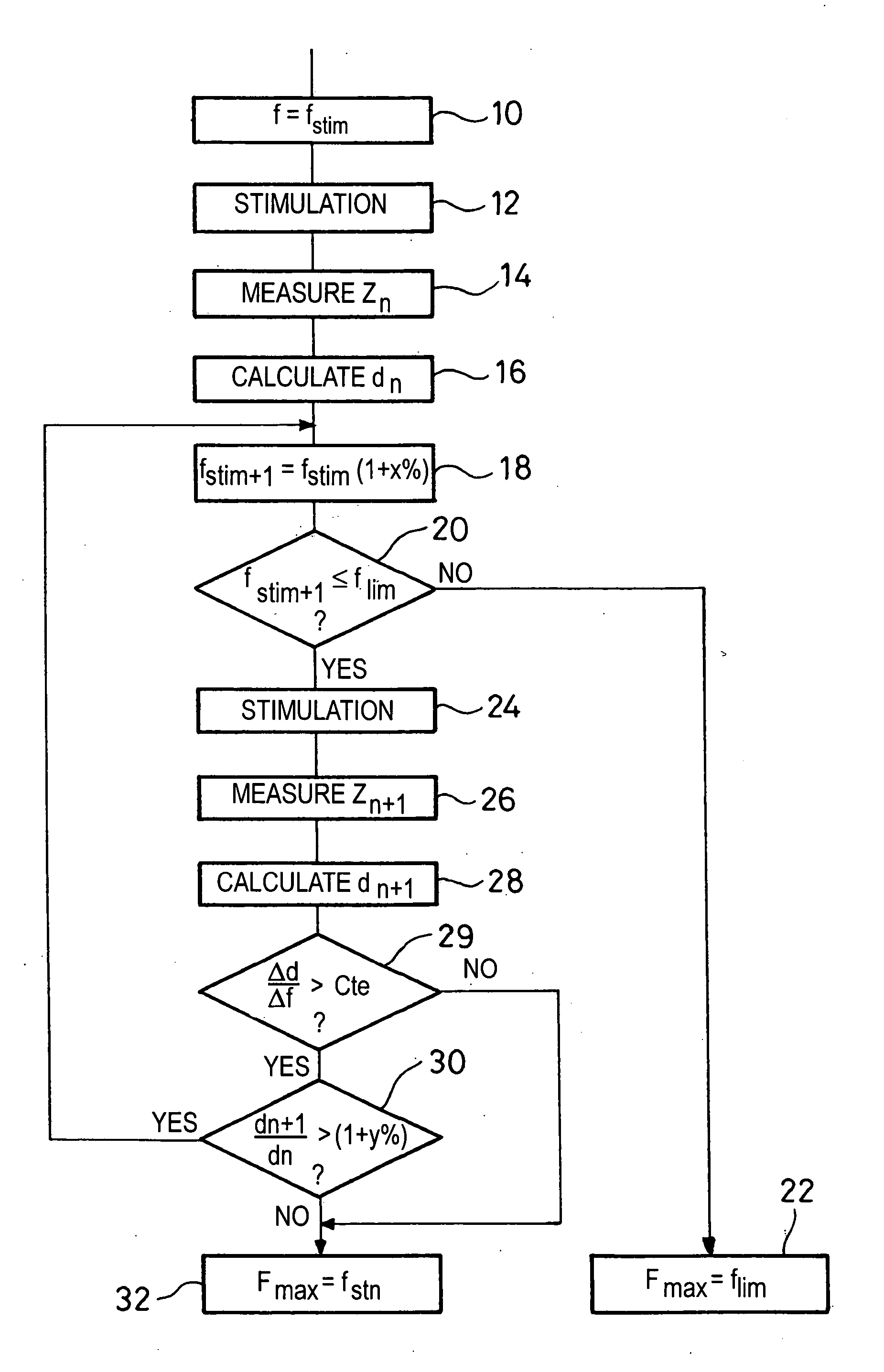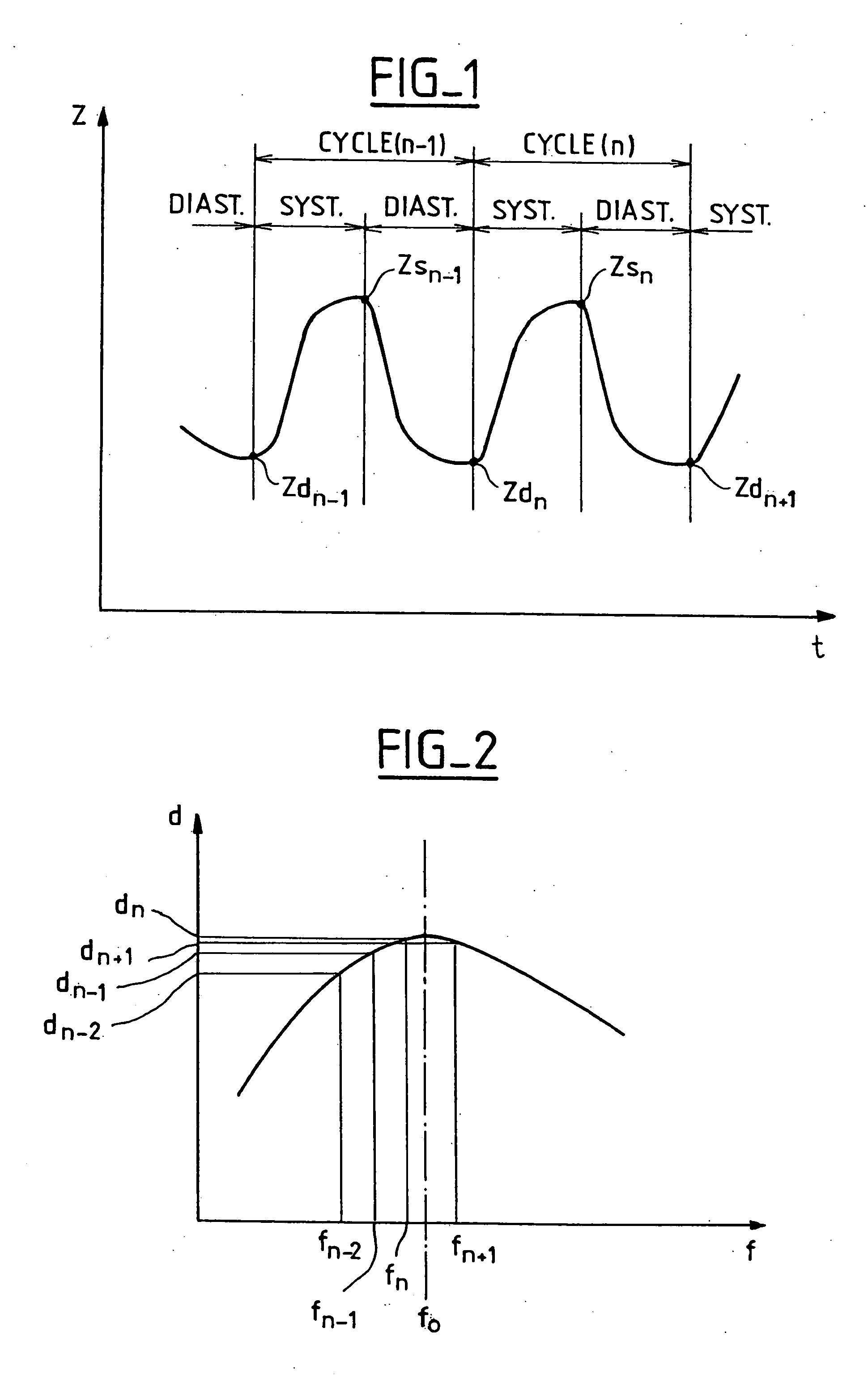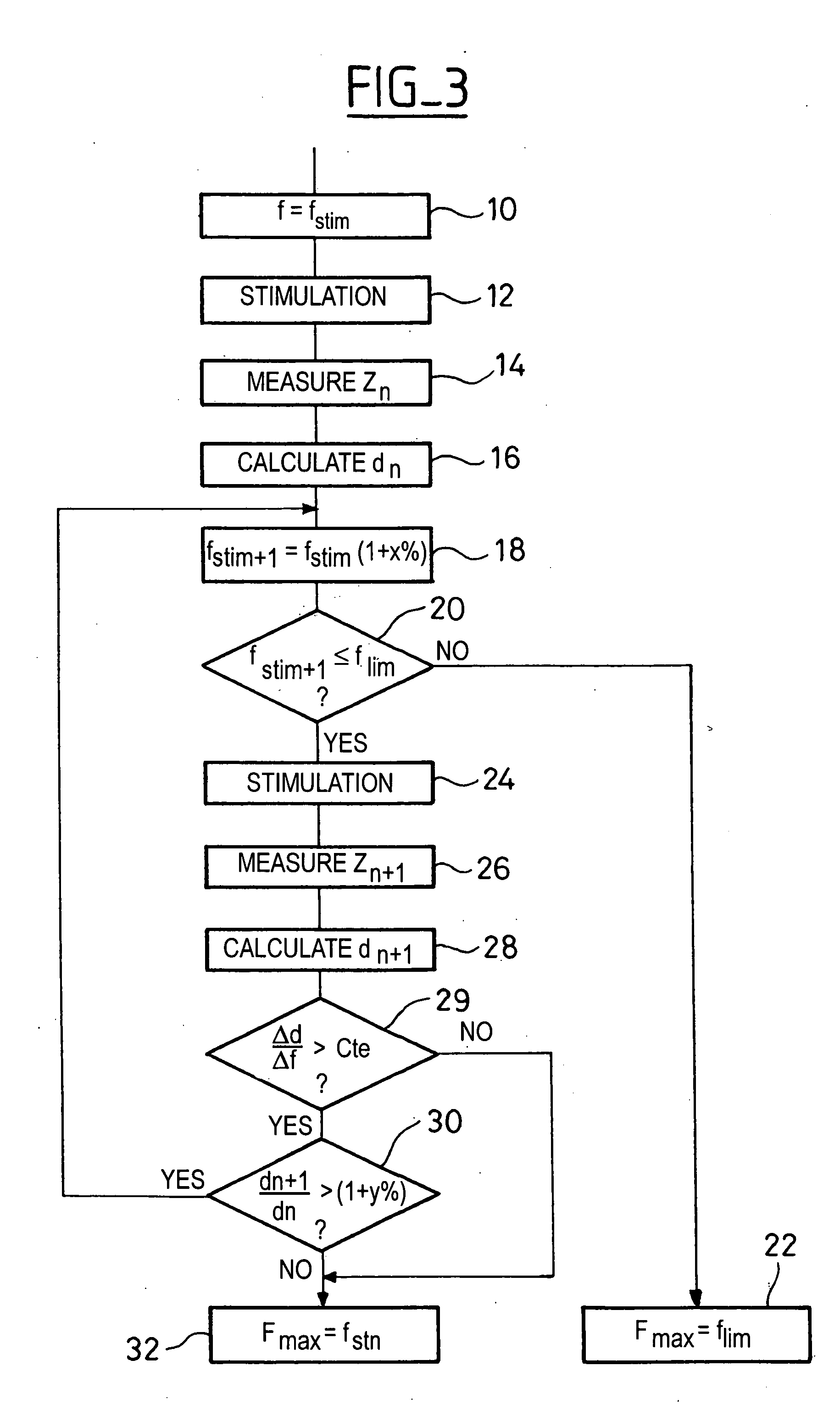Adjusting the maximum ventricular stimulation frequency according to the hemodynamic state of the patient in an active implantable medical device
a technology of ventricular stimulation and maximum ventricular stimulation, which is applied in the field of active implantable medical devices, can solve the problems of short response time, low sensitivity to low level of effort, and relatively long response tim
- Summary
- Abstract
- Description
- Claims
- Application Information
AI Technical Summary
Benefits of technology
Problems solved by technology
Method used
Image
Examples
Embodiment Construction
[0033] The present invention concerns, in a general way, a cardiac pacemaker (or a defibrillator, cardiovertor or multisite device), more preferably a rate responsive device enslaved to an effort sensor (physiological sensor), typically a minute-ventilation sensor. The minute-ventilation is a factor representative of the instantaneous metabolic needs of the patient, and it is evaluated by a measurement of trans-pulmonary bio-impedance, i.e., operated (or measured) between the heart and the case of the pacemaker, located in the top of the thorax, as is well known in the art.
[0034] The invention primarily proposes to modify the stimulation frequency maximum (hereafter Fmax) according to an improvement or no improvement of the cardiac flow in the patient carrying the device, this flow being evaluated by an intracardiac measurement of bio-impedance.
[0035] The measurement of an intracardiac bio-impedance is a technique in itself known. EP-A-1 116 497 and its counterpart U.S. Pat. No. 6...
PUM
 Login to View More
Login to View More Abstract
Description
Claims
Application Information
 Login to View More
Login to View More - R&D
- Intellectual Property
- Life Sciences
- Materials
- Tech Scout
- Unparalleled Data Quality
- Higher Quality Content
- 60% Fewer Hallucinations
Browse by: Latest US Patents, China's latest patents, Technical Efficacy Thesaurus, Application Domain, Technology Topic, Popular Technical Reports.
© 2025 PatSnap. All rights reserved.Legal|Privacy policy|Modern Slavery Act Transparency Statement|Sitemap|About US| Contact US: help@patsnap.com



